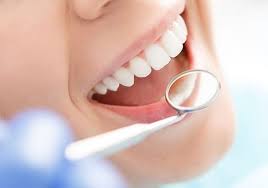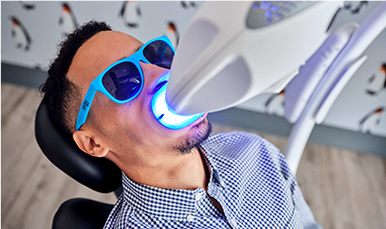Revolutionizing Dentistry: Innovative Technology and Materials in Modern Partial

Introduction
In recent years, the field of dentistry has witnessed remarkable advancements in technology and materials, particularly in the realm of partial dentures. These advancements have revolutionized the way dental professionals approach tooth replacement, offering patients improved aesthetics, comfort, and functionality. From digital scanning and design to the development of cutting-edge materials, this article explores the innovative technologies and materials driving the evolution of modern Partial Dentures Timonium.
Digital Dentistry: Precision and Efficiency
One of the most significant advancements in modern dentistry is the integration of digital technologies throughout the treatment process. Digital scanning systems, such as intraoral scanners, have replaced traditional impressions, offering numerous benefits including increased accuracy, improved patient comfort, and streamlined workflow for dental professionals. With the ability to capture highly detailed 3D images of the oral cavity, digital scanning facilitates the precise design and fabrication of partial dentures.
Computer-Aided Design (CAD) and Computer-Aided Manufacturing (CAM) technologies have further enhanced the precision and efficiency of partial denture fabrication. CAD software enables dental technicians to digitally design custom prostheses that meet the unique anatomical and functional requirements of each patient. CAM systems, including 3D printers and milling machines, then translate these digital designs into physical restorations with unparalleled accuracy and consistency. This integration of digital technologies has revolutionized the production of partial dentures, offering patients superior fit and aesthetics compared to traditional methods.
Advanced Materials: Strength, Durability, and Aesthetics
In addition to technological advancements, the development of innovative materials has played a pivotal role in enhancing the performance and aesthetics of modern partial dentures. Traditional materials such as acrylic resin and metal alloys have been surpassed by newer options that offer superior strength, durability, and biocompatibility.
One of the most notable advancements in partial denture materials is the widespread adoption of high-performance polymers, such as thermoplastic resins. These materials combine the strength and durability of traditional acrylics with enhanced flexibility and fracture resistance, making them ideal for use in removable partial dentures. Thermoplastic resins also offer excellent aesthetics, as they can be color-matched to natural teeth for seamless integration with the patient's smile.
Another innovative material revolutionizing partial dentures is zirconia. Zirconia is a biocompatible ceramic material known for its exceptional strength and durability, making it an ideal choice for fabricating partial denture frameworks. Unlike traditional metal frameworks, zirconia restorations are lightweight, hypoallergenic, and highly resistant to corrosion and plaque accumulation. Additionally, zirconia can be milled with precision using CAD/CAM technology, ensuring optimal fit and comfort for the patient.
Furthermore, the emergence of nanotechnology has opened up new possibilities in dental materials science. Nanocomposites, which consist of nano-sized particles dispersed within a polymer matrix, offer improved mechanical properties and enhanced aesthetics compared to conventional materials. These advanced composites can be used to fabricate partial denture bases and teeth with superior strength, wear resistance, and lifelike appearance.
Patient-Centered Design: Comfort and Aesthetics
Beyond technological and material advancements, modern partial dentures are designed with a focus on patient-centered care, prioritizing comfort, functionality, and aesthetics. Digital design software allows dental professionals to customize the shape, size, and contour of partial dentures to ensure optimal fit and comfort for each patient. Additionally, advancements in 3D printing technology enable the fabrication of partial dentures with thin, lightweight structures that minimize bulkiness and improve patient comfort.
Aesthetics are also a key consideration in the design of modern partial dentures. With the ability to digitally simulate the final restoration, dental technicians can work closely with patients to achieve their desired aesthetic outcome, including natural-looking tooth shapes, colors, and translucency. Advanced materials such as zirconia and nanocomposites further enhance the aesthetic appeal of partial dentures, providing patients with restorations that closely resemble natural teeth.
Conclusion
Innovative technology and materials have revolutionized the field of Partial Dentures Timonium., offering patients and dental professionals unprecedented levels of precision, durability, and aesthetics. Digital scanning and design technologies have improved the accuracy and efficiency of partial denture fabrication, while advanced materials such as thermoplastic resins, zirconia, and nanocomposites have enhanced the strength, durability, and aesthetics of these prostheses. By embracing these advancements, dental professionals can provide patients with partial dentures that not only restore function but also enhance their quality of life and confidence in their smiles.





